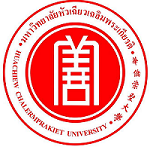Please use this identifier to cite or link to this item:
https://has.hcu.ac.th/jspui/handle/123456789/4662Full metadata record
| DC Field | Value | Language |
|---|---|---|
| dc.contributor.author | 张晶莹 | - |
| dc.contributor.author | Zhang Jingying | - |
| dc.contributor.author | 艾红娟 | - |
| dc.contributor.author | AI Hongjuan | - |
| dc.contributor.other | Huachiew Chalermprakiet University. College of Chinese Studies. Graduate Student | en |
| dc.contributor.other | Southwest University. School of Literal Arts | en |
| dc.date.accessioned | 2025-10-14T12:41:11Z | - |
| dc.date.available | 2025-10-14T12:41:11Z | - |
| dc.date.issued | 2023 | - |
| dc.identifier.citation | วารสารวิชาการภาษาและวัฒนธรรมจีน 10, 2 (กรกฎาคม-ธันวาคม 2566) : 231-242. | en |
| dc.identifier.uri | https://has.hcu.ac.th/jspui/handle/123456789/4662 | - |
| dc.description | สามารถเข้าถึงบทความฉบับเต็ม (Full Text) ได้ที่ : https://so02.tci-thaijo.org/index.php/clcjn/article/view/260028/178275 | en |
| dc.description.abstract | 不同语言对同一事物有不同的表达方式,而使用同一语言的民族如何去表达则是基于该民族文化中谈及该事的经验的寻常方式。本文从词义的完全对应、部分对应和不完全对应三种关系出发,对汉泰语言中“花/ดอก”的 词义进行对比分析。研究结果显示,这三种对应关系的相似性与差异性可能源于两国文化的不同,而其差异性可能导致泰国汉语学习者在语用中会出现误用、错用或遗漏的现象。本文详细剖析汉泰语言中“花/ดอก”的词义内涵,从文化角度解析汉泰语言同一词的词义差异,期望能在指导泰国汉语学习者语言习得的同时也能使学习者更好地进行词语运用,使学习者能够更好地理解中国文化。 | en |
| dc.description.abstract | Different languages have different ways of expressing the same thing, and how people use the same language to express is based on the experience of the national culture. Starting from the three relationships of full equivalence, partial equivalence and not equivalence of word meanings, this paper compares and analyzes the meaning of "Flower" in the Chinese and Thai language. The results show that the similarity and difference of these three equivalences may stem from the differences in the cultures of the two countries, and their differences may lead to misuse, omission in the pragmatics of Chinese learners. This paper analyzes in detail the connotation of "Flower" in Chinese and Thai language, analyzes the difference in the meaning of the same word in two languages from a cultural perspective, and hopes to guide Chinese learners in language acquisition while enabling learners to better use words, so that learners can better understand Chinese culture. | en |
| dc.language.iso | zh | en |
| dc.publisher | มหาวิทยาลัยหัวเฉียวเฉลิมพระเกียรติ | en |
| dc.subject | ภาษาจีน -- การศึกษาและการสอน – ไทย | en |
| dc.subject | Chinese language -- Study and teaching – Thailand | en |
| dc.subject | 汉语 -- 学习和教学 -- 泰国 | en |
| dc.subject | วัฒนธรรมจีน | en |
| dc.subject | Chinese culture | en |
| dc.subject | 中国文化 | en |
| dc.subject | ภาษาจีน – การใช้ภาษา | en |
| dc.subject | 汉语 -- 语言使用 | en |
| dc.subject | Chinese language – Usage | en |
| dc.subject | ภาษาศาสตร์เปรียบเทียบ | en |
| dc.subject | 比较语言学 | en |
| dc.subject | Comparative linguistics | en |
| dc.subject | ภาษาไทย – การใช้ภาษา | en |
| dc.subject | Thai language -- Usage | en |
| dc.subject | 泰语 -- 语言使用 | en |
| dc.title | 汉泰语言中 “花/ดอก” 的词义对比研究 | en |
| dc.title.alternative | A Comparative Study of the Meaning of "Flower" in Thai and Chinese Language | en |
| dc.type | Article | en |
| Appears in Collections: | College Of Chinese Studies - Articles Journals | |
Files in This Item:
| File | Description | Size | Format | |
|---|---|---|---|---|
| A-Comparative-Study-of-the-Meaning-of-Flower-in-Thai-and-Chinese-Language.pdf | 203.2 kB | Adobe PDF | View/Open |
Items in DSpace are protected by copyright, with all rights reserved, unless otherwise indicated.
